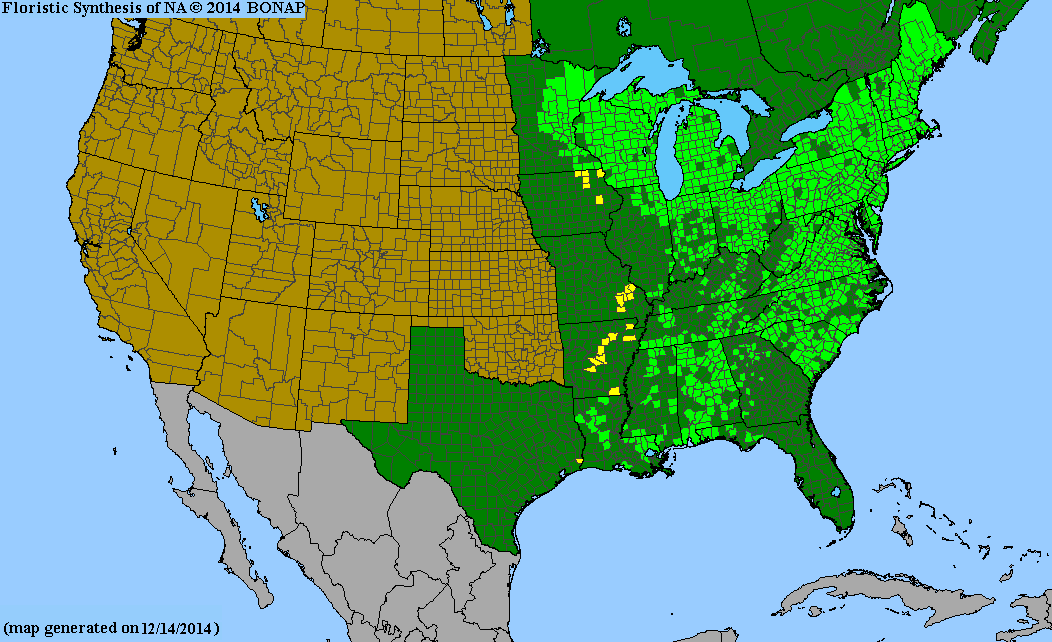Ilex verticillata
Winterberry,
Winterberry Holly
NJ Ecotype (Grown from Seed)
*Seedling stock expected by 2027 due to double dormancy
Deciduous shrub; 3-15ft tall
Dioecious; small, white inconspicuous flowers bloom spring to summer; if cross-pollinated, bright red berries ripen from late summer to fall and remain through winter; foliage turns a range of yellow to purple in autumn
Flowers are cross-pollinated by small bees, beetles and skippers; Ilex species support Colletes banksi, a specialist plasterer bee; host plant to Henry’s Elfin and Harris’ Three Spot
Berries are an important winter food source for various birds including Brown Thrasher, Northern Mockingbird, Gray Catbird, Hermit Thrush, and more
Versatile shrub that does well in most soil and sunlight conditions; makes for a nice privacy hedge or in rain garden plantings; its winter berries provide late season interest
Winterberry,
Winterberry Holly
NJ Ecotype (Grown from Seed)
*Seedling stock expected by 2027 due to double dormancy
Deciduous shrub; 3-15ft tall
Dioecious; small, white inconspicuous flowers bloom spring to summer; if cross-pollinated, bright red berries ripen from late summer to fall and remain through winter; foliage turns a range of yellow to purple in autumn
Flowers are cross-pollinated by small bees, beetles and skippers; Ilex species support Colletes banksi, a specialist plasterer bee; host plant to Henry’s Elfin and Harris’ Three Spot
Berries are an important winter food source for various birds including Brown Thrasher, Northern Mockingbird, Gray Catbird, Hermit Thrush, and more
Versatile shrub that does well in most soil and sunlight conditions; makes for a nice privacy hedge or in rain garden plantings; its winter berries provide late season interest
Winterberry,
Winterberry Holly
NJ Ecotype (Grown from Seed)
*Seedling stock expected by 2027 due to double dormancy
Deciduous shrub; 3-15ft tall
Dioecious; small, white inconspicuous flowers bloom spring to summer; if cross-pollinated, bright red berries ripen from late summer to fall and remain through winter; foliage turns a range of yellow to purple in autumn
Flowers are cross-pollinated by small bees, beetles and skippers; Ilex species support Colletes banksi, a specialist plasterer bee; host plant to Henry’s Elfin and Harris’ Three Spot
Berries are an important winter food source for various birds including Brown Thrasher, Northern Mockingbird, Gray Catbird, Hermit Thrush, and more
Versatile shrub that does well in most soil and sunlight conditions; makes for a nice privacy hedge or in rain garden plantings; its winter berries provide late season interest
Details
-
White, Green
-
Spring
-
Yellow, Purple
-
3-15ft
-
Dry, Medium, Wet
-
Full, Partial, Shade
-
Henry’s Elfin
Harris’ Three Spot -
FACW - usually occurs in wetlands, but can occur in non-wetlands
-
Scarification improves germination rates; double dormancy

